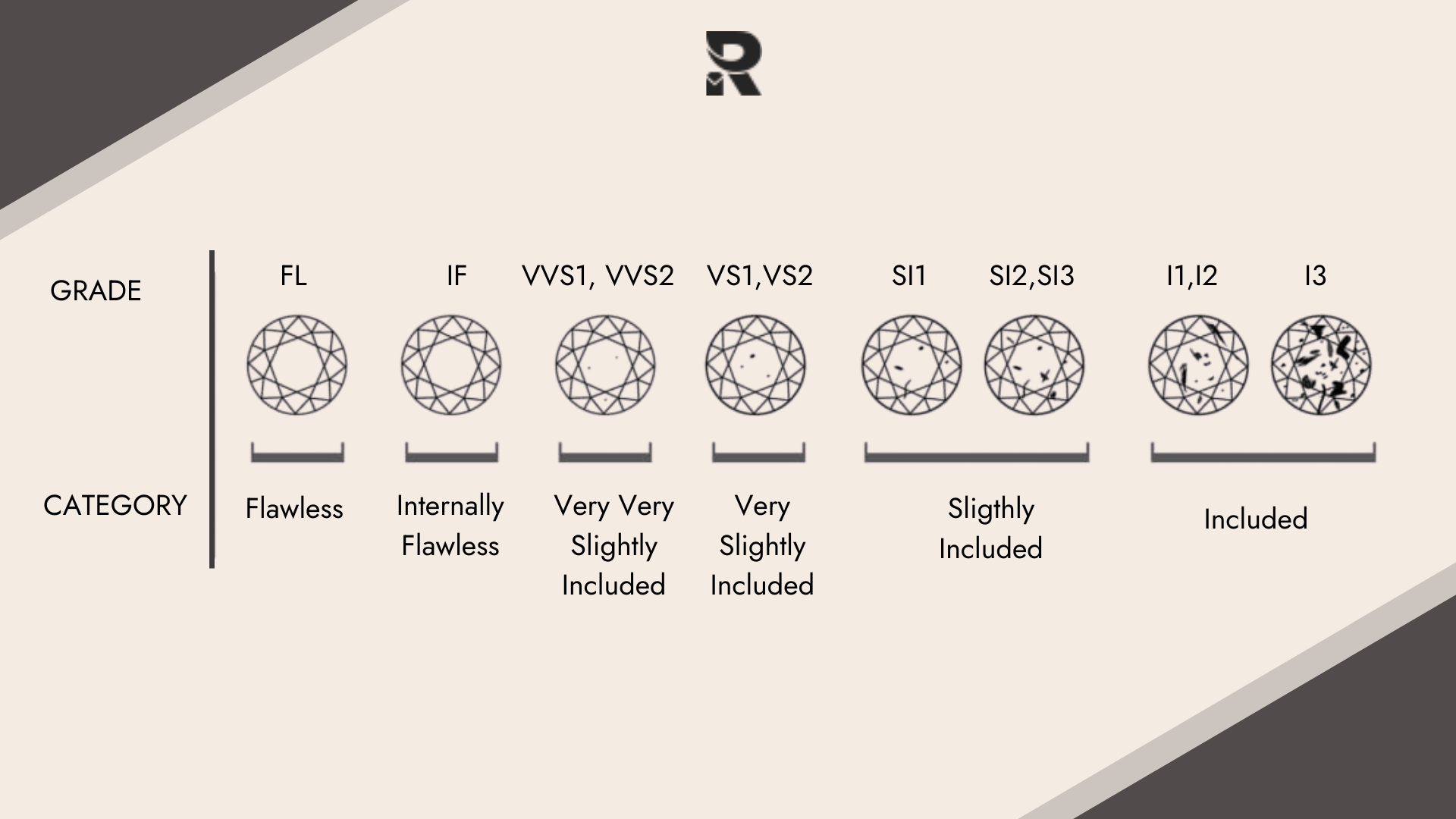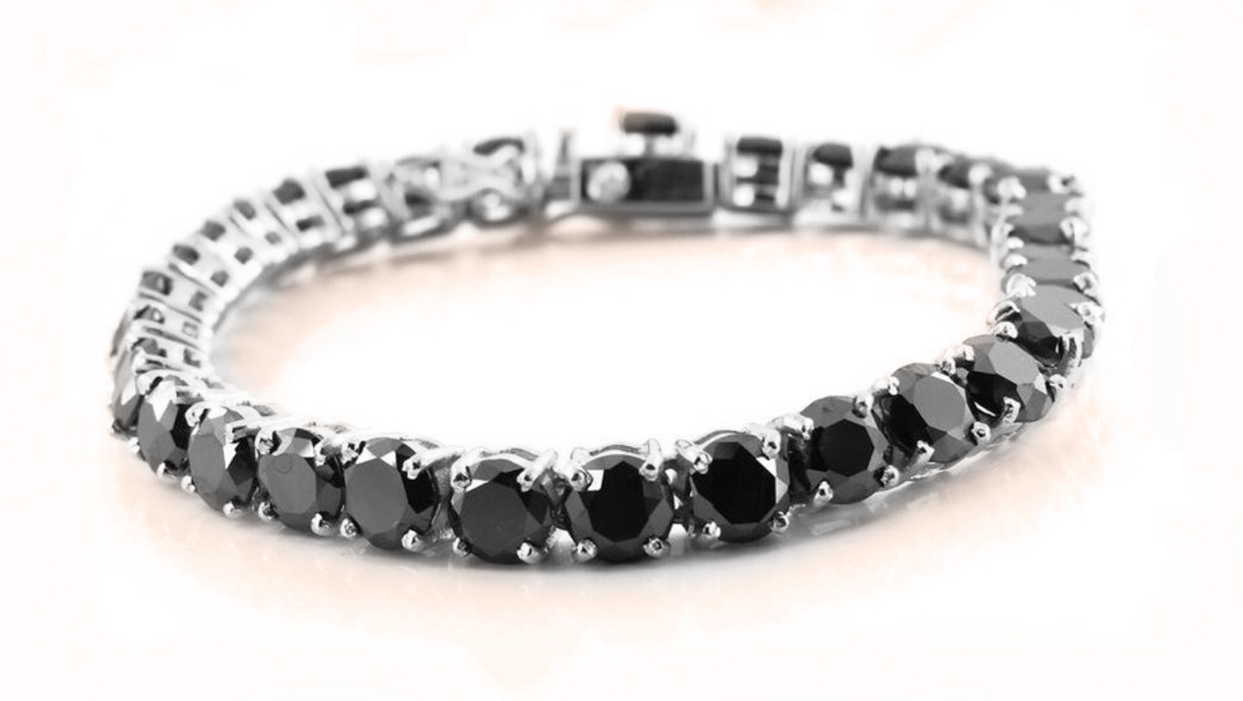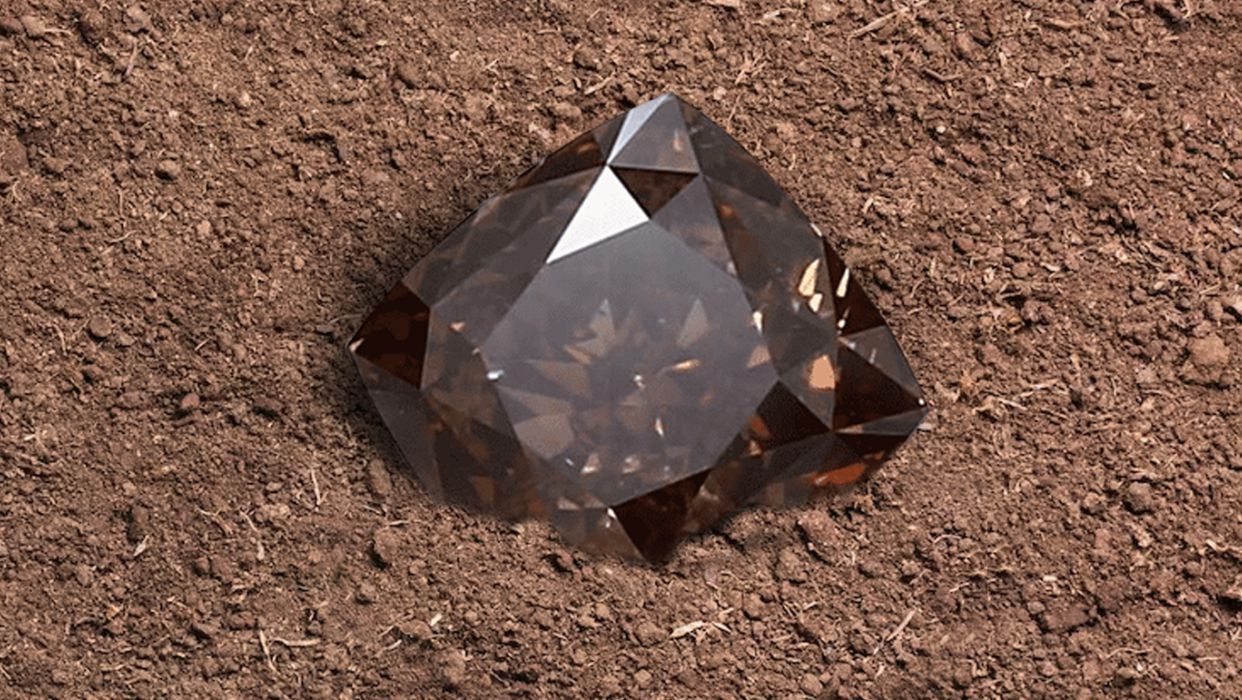
There are a lot of trust issues that individuals feel when they go out diamond shopping anywhere.
You can be in some of the most reputed stores which display jewelry from prestigious brands and yet when it comes to paying the bill you might hesitate to reach into your pocket and pull out your card.
We guess this is a feeling which is most common among amateur or new buyers of diamonds and other ornaments. In such cases, it is most wise to research before hand and then go out to purchase so you don’t get duped into buying something cheap for a much higher price.
To help you for diamond shopping out we have created this guide which will teach you to calculate diamond prices so you don’t get ripped off & overpay. We will be going over every topic which a buyer should be aware of before spending loads of money on diamonds.
Diamond Pricing
Take into consideration any precious metal or gem, they all must have a price which may vary depending on time, market demand, type, quality, certifications and what not.
One such example can be put forward of gold. Gold is known as one of the most precious metals out there as it stands out alone in jewelry and also when mixed with other gems. Basically, gold is priced according to all the above factors along with karat and making charges. Thus the prices may vary and may seem to have huge differences relatively at different times of the year.
Now, put this basic concept and apply it on diamonds and you will be able to determine the price of a diamond. The carat, size of the diamond, cut, quality, grade, market demand all of this contribute to the setting up of the diamond price.
A simple formula which one might use to calculate the worth of the diamond is:
Diamond price= carat x price per carat
This ‘price per carat’ is what varies when it comes to diamonds. It can be said that a diamond price is directly proportional to the demand put forward in the market. Higher the demand higher the price, lower the demand lower the price of the diamond.
To give you an example of the above equation if the per carat weight of a brilliant-cut diamond is $4500 then 0.7 carat of this diamond will be worth 0.7 x $4500= $3150. It’s as if you’re doing simple multiplication.
How is the ‘Price per Carat’ mentioned in the above equation defined? Let us check that now.
How Price Per Carat is Decided
The factor ‘price per carat’ is decided individually by brands based on a generic price list which can be considered to be the average of all diamond prices. Each company has its own diamond price chart which they refer to when selling their diamonds. Our diamond price chart is as follows:

The source used by us to form this diamond price chart is the live market data which is then used by vendors and diamond retailers to set the prices of the gems they sell. The difference in price can be up to 10% from business to business.
The prices on these charts are mainly per carat and in USD. The following price list of diamonds has been set taking the round diamond as the starting point. Meaning all these prices are of different types of a round diamond, they differ on the basis of Clarity, depth and color.
The lab which has graded these diamonds is the AGS (American Gem Society), an international grading organization whose certification is considered valuable for the diamond.
A similar diamond chart is released for different shapes of diamonds; Asscher, Cushion, Emerald, European, Flanders, Heart, Marquise, Old-Miner, Oval, Pear, Princess and many other diamond shapes.
Hope that was easy for you to get a grip on. Before you go and start calculating the prices of diamonds to buy them be sure to pay attention to the following factors:
Also Read: Tips for beginners traders -How to get started
Factors Affecting Calculation of Diamond Prices
Certification:
One of the most important documents of a diamond which holds even more value than your purchase bill; Diamond Certificate. A certification from a trusted organization or grading institute such as GIA, IGI, AGS, HRD and others is considered to be valuable. These certificates act as a report for genuinity, which prove that they are worth their money.
If you’re going to spend $1000-$2000 you are bound to want proof that you bought the real thing these diamond certificates act like proof. To put it into perspective a diamond which has a certificate of being graded is worth ten folds more than an uncertified diamond.
It is important that when you go to a retailer or diamond merchant to purchase diamonds that you demand a certificate as it may be possible that these merchants may sell you diamond simulants or diamond look-a-likes and advertise them as real diamonds.
The 4C’s:
Carat, Cut, Color and Clarity are the 4C’s which hold a major role in the evaluation of the price of a diamond.
Cut Quality
How important is it to know the cut of a diamond? Well, according to experts it plays a major role in determining the price of a certain diamond. Out of the 4C’s the knowledge of the cut quality is most valuable.
To put in perspective a diamond with the same color & clarity might be 6-7% cheaper than another diamond, you might think you made a huge profit and got a good deal. But it may turn out that the gem you purchased for a lower price may be less brilliant (as in the cut) and be of poor quality.
So, what exactly is a diamond Cut?
If you consider the shape and the cut of the diamond to be the same thing then you are slightly off track. The cut of a diamond refers to how well it has been chiseled into the desired shape, how well it has been polished and how proportionate is the depth and symmetry of the diamond.
All of these factors affect the brilliance and beautification of the diamond. Brilliance refers to how well the diamond reflects and refracts light thus giving it a ‘shiny’ appearance. The cut of a diamond contributes to enhancing the luminous property of a diamond.
If you were to compare a brilliant-cut diamond and a poorly-cut diamond you would observe that a poorly-cut diamond has barely non-luminous property and appears to be dull. Thus, you would be wasting your money if you buy a diamond with a poor cut.
How many types of diamond cuts are there?
Excellent: A spectacular sparkle is received when a diamond is given an ‘excellent-cut’. It is one of the finest cuts which provides impeccable brilliance and the highest order of fire. Thus making sure that every facet and the table are able to refract light without any obstructions.
Very Good: Just a level below the excellent-cut is the very good cut for a diamond. To the naked eye, a very good cut diamond will provide a similar sparkle like that of an excellent cut diamond. This cut allows the majority of the light entered to be refracted and it also has very high brilliance.
Good: Diamond with such cuts are cheaper but tend to provide a good amount of sparkle by the reflection of the diamond table. These diamonds display good brilliance and sparkle.
Fair: Fair cut diamonds reflect and refract only a fair portion of the light entering. The rest escapes through the bottom, thus making these diamonds only suitable for smaller carats and gems which act as the supporting stone.
Poor: Like the term suggests a diamond with this cut offers poor brilliance, sparkle and fire. It is better not to purchase a diamond like this as the light entering escapes off the sides and the bottom.
How diamond cut affects price?
The symmetry, depth, precision all of these factors affect the price of a diamond. The more accurate the ratio of the above factors the higher price you will be paying. The facets of a diamond which are the flat polished surfaces (found all over the diamond) and the table (biggest flattest surface found in some diamonds), if they have an excellent cut then the light reflected gives an amazing shiny appearance.
The symmetry of the diamond, the precision of the cut and the amount of light which returns on entering a diamond is what matters. The better these factors are the more you might end up paying for a diamond. Poorly cut diamonds don’t possess brilliance up to this level and are cheaper.
In conclusion, a diamond’s cut directly impacts the price of a diamond and is beneficial if you spend more money on the cut of a diamond rather than its color or clarity.
Color
The color of a diamond is another major factor and refers to how clear a diamond is or how yellow the diamond may appear. Diamonds aren’t always colorless (the ones that are majorly seen in advertisements) that’s just a generalized image of a diamond. Natural diamonds come with a yellow tint in them and thus are considered as the color of a diamond.

How important is the role of color in the pricing of diamonds? Very important if you ask us as the color decides the worth of a diamond. A flawlessly colorless diamond will be worth five times more than an extremely yellow tinted diamond.
The color of these diamonds is decided on the basis of a grading scale created by GIA- Gemological Institute of America. The scale starts from D and goes all the way to Z, wherein ‘D’ is for colorless diamonds and ‘Z’ is for fully yellow-tinted diamonds.
Pondering about the color of a diamond before purchasing it has esteemed benefits, in which you can save a great deal of money. As diamonds which are placed near to D-scale are significantly costlier than diamonds placed towards the Z-side of the color grading scale.
How much does color affect the diamond price?
Out of the 4C’s the color of a diamond only influences the price of a diamond up to an extent. This doesn’t mean that it isn’t important. Your aim should be to try to buy a diamond with the most minimum amount of yellow tint present in it.
There is a thin line between a colorless diamond and a diamond with a yellow tint. This line varies with the size, shape and how the diamond is set. These factors make it harder for a person to check whether their diamond is actually colorless or has a very slight yellow tint.
However, once you are sure that the diamond is colorless or close to it then it’s time to stop your search. As the more purified and flawless you want your diamond to look, higher will be the price and after a while, it will just start getting heavy on your pocket.
While technically the color of a diamond can be analyzed, one cannot determine the color of a diamond just by looking at it from a naked eye. Proper equipment and an expert is needed to determine exactly what color scale does a diamond lie on.
Also Read: Rustic diamond : Know in detail about the ‘one in a million’ type diamond
Diamond Color Scale
The diamond color scale put forward by GIA is considered to be the best color scale and is thus used worldwide. The colors range from D to Z, each scale determining a different level of a yellow tint. And to save you from the misconception that the scale is incomplete as it does not start with A, B, C; this has only been done to avoid any sort of confusion while checking the color of the diamond.
D: The most colorless and expensive diamonds are placed on the D-scale of GIA. If you were to inspect this type of diamond using a magnifier or a diamond testing tool then you would be able to see no color at all. These diamonds are extremely rare and hold an upper hand in comparison to other color grades.
E: There is a slight variance of these types of diamonds when compared to ‘D’ type diamonds. Only an expert will be able to tell the difference between the two as an E color diamond is close to colorless. This type of diamond may not be as expensive as D color diamond but it will cause a big dent in your pockets.
F: If you were to ask a normal person to differentiate between a D, E and F color diamond it will be almost impossible to do so with a naked eye. As they are almost identical only an expert gemologist will be able to differentiate between the 3.
G-J: The diamonds which are given a color between G-J are termed as ‘near colorless’ as these diamonds have an insignificant yellow tint present in them. This type of diamond makes up 15% of all the gems present in the market. The G & H color diamonds have barely any tint and can be passed off as near colorless without any doubt. The I & J color of diamonds have some sparkle disruption which is caused by the yellow color present in them.
K-M: Diamonds which have been known to be classified as ‘faint yellow’ color diamonds are given the color K, L, or M. In diamonds like this it’s not exactly easy to see the yellow tint but it can be visible when observed closely. These diamonds are moderately priced.
N-R: N, O, P, Q, R diamond colors are given to the category of diamonds which are also termed as ‘Very Light Yellow’. These diamonds can be separated from the faint and near colorless with much ease. Diamonds with such yellow tint are normally not purchased by people. These types of diamonds are also available at a very cheaper price than other premium diamonds.
S-Z: Steer clear of diamonds that have been given a color between S-Z, as these diamonds have a fairly visible yellow color. These diamonds are also classified under ‘Light Yellow’ color diamonds. It is recommended not to buy these diamonds.
Carat
A carat is a positive factor of a diamond, anyone would want the carat to increase and that they get the biggest carat diamond at the cheapest price. The role of a carat is quite direct when calculating the price of a diamond as mentioned in the formula above carat x price per carat.
As natural diamonds are mined, rough diamonds processed, cut and polished. The end product leads to many diamonds coming out small or are of less carat. That is why big diamonds are priced extremely high as they are hard to find in comparison to smaller diamonds which can be crafted with ease.
To get a perspective you may be able to buy two smaller diamonds for a good price and it may not be equal to the cost of a larger diamond whose carat weight is equal to the sum of the two small diamonds. Thus go for a higher carat but as big as you can afford and take into consideration it’s cut and color to get the best deal.
Also Read: How to buy a diamond wholesale: Find certified diamond wholesale distributor
Clarity
At 4th position of the 4Cs after the cut, color and carat is clear. Clarity refers to the ability of a person to see through the diamond’s inclusions, blemishes, and defects. The diamond which has fewer blemishes, inclusions, and defects will have higher clarity; it is inversely proportional.
Though the clarity of a diamond can sway the price of a diamond higher or lower, it is difficult to establish the true clarity of a diamond without an expert or proper equipment. And it is recommended that only after proper analysis and verification of clarity of the diamond should a gem be purchased.
Natural diamonds are formed hundreds of miles below the earth’s surface under extreme temperature and pressure. They are then mined out as ores and then the rough diamond is extracted.
The gem is then cut, polished and processed and then sent forward to be sold. Now in between all these processes, the gem has a high chance of suffering damage which can be classified as inclusions, blemishes and surface defects.
It is only rare that a diamond extracted is completely clear and possesses the highest level of clarity. Such diamonds are priced extremely higher than other diamonds of the same type but less clarity.
How Clarity of a Diamond is Analyzed?
The gemologist will place the diamond in a face-up position, with the biggest facet/flat-surface facing up. Then with a 10x microscope, the gemologist will inspect the diamond, this is done to help see the negligible inclusions, blemishes and defects which occur when a diamond is cut.
There are in total five factors which are looked upon when checking the clarity of a diamond: nature, size, location, number and the intensity of the inclusions/irregularities. After inspecting the gem’s clarity is determined by a diamond clarity grading scale which has been provided by GIA for universal usage.
Diamond Clarity Grading Scale
There are a total of 9 grades which you can give a diamond of the diamond clarity grading scale prepared by GIA. The higher the clarity of a diamond, the more expensive will the gem be priced.
IF (Internally Flawless): Diamonds which have clarity of this level are commonly called as ‘flawless’ diamonds. However, these types of diamonds are extremely rare, have no inclusions and possess the utmost clarity.
VVS1 (Very Very Slightly Included- 1st Degree):
Like the name suggests diamonds graded as VVS1 have very very slight or pinpoint inclusions. These inclusions are obviously not visible with the naked eye and even a microscope which is set at a certain depth will be able to see the inclusions or irregularities.
VVS2 (Very Very Slightly Included- 2nd Degree):
A higher degree of inclusion in comparison to VVS1. The diamonds which are given a clarity grade of VVS2 have pinpoint inclusions the size of VVS1 but altogether thus forming VVS2. A properly equipped microscope has been used to inspect a diamond of this clarity, otherwise, you will miss out the irregularities/inclusions.
VS1 (Very Slight Included- 1st Degree ):
You won’t need a highly equipped microscope to figure out the inclusions present in a VS1 clarity diamond. They will be visible when inspected with a magnifier, the irregularities are bigger than pinpoint inclusions and are not visible to the naked eye.
VS2 (Very Slight Included- 2nd Degree ):
Take VS1 and take it one step ahead. Wherein you can make of the inclusions with your naked eye. However, diamonds with such clarity are still worth good money.
SI1 (Slightly Included- 1st Degree):
When it looks as if instead of pinpoint inclusion there are proper dots of inclusions, then a diamond is given the SI1 clarity grade. In this, no microscope is needed and the inclusions look concentrated to certain points.
SI2 (Slightly Included- 2nd Degree):
The inclusions present in a diamond with a clarity grade of SI2 can easily be caught by the naked eye. In this, the irregularities can be concentrated at one place and also be spread out.
I1 (Included- 1st Degree):
Diamonds with I1 clarity grade have obvious inclusions and thus are hardly ever produced. As they look awful and ruin the whole look of the gem. It is better to avoid buying such diamonds.
I2/I3:
The inclusions which were seen in I1, if you were to intensify them you would get I2 and I3 clarity grade diamonds. These diamonds are not produced as no one would buy them for the purpose of jewelry.

Non-Diamond Related Factors Which Affect Diamond Pricing
Market:
The market is a constant up & down graph where things increase and decrease in price with many fluctuations. When the world’s economies are prospering and the demand for luxury rises the price per carat of diamonds also tends to rise. When a recession takes place and economies come crumbling, the demand for essential goods increases, the diamond market makes a sharp downfall and thus prices fall without any haste. This is one of the most inconsistent factors which affects the price of a diamond.
Location:
This is regarding where you plan on buying a diamond. As each country and state have different tax laws and laws regarding the purchase of precious gems like diamonds. In some places, you may be charged and taxed highly and in other states, you end up getting discounts.
Seller:
One of the major factors is who is the seller, is it a brand? A diamond merchant? A retailer? A wholesaler? Each one of these will have different prices, different deals and different benefits. So, choose wisely.
Conclusion Thoughts
Calculate Diamond Prices on Your Own!
Now that we have touched every topic in this tangent, we hope that you will be able to calculate the worth of a diamond and not get duped. One of the most important things while shopping for diamonds is knowledge. The more detail you gain on a diamond regarding its cut, clarity, carat, shape, price per carat, the more you will be able to make a fair trade as you will figure out the actual worth of the gem.

